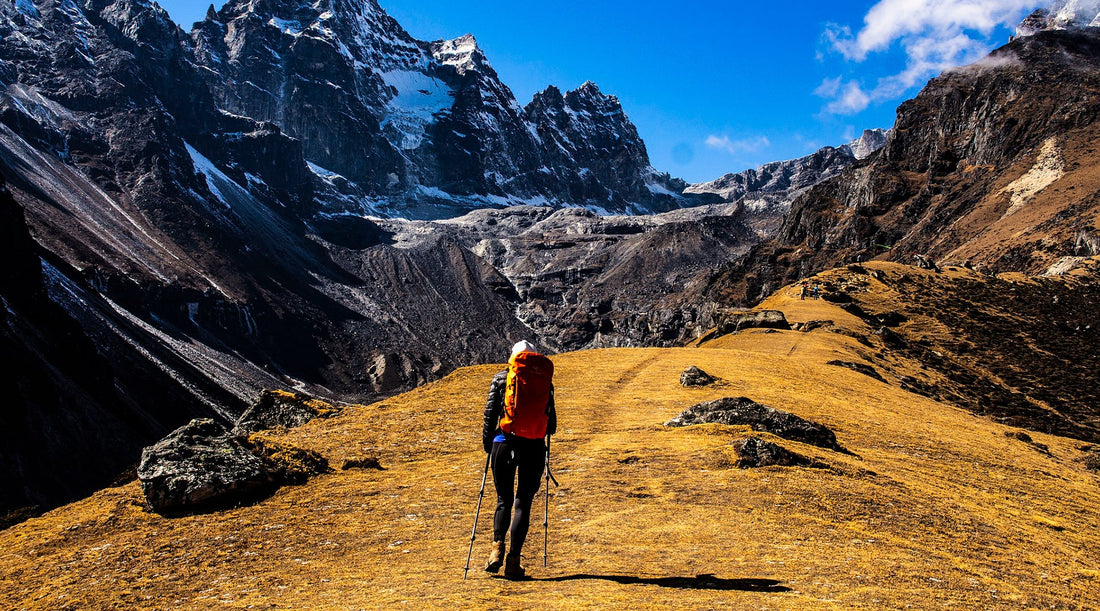You can't backpack without getting dirty, and oftentimes all it takes a few steps on a dusty trail. Even so, that doesn't (and perhaps shouldn't) come at the expense of your personal hygiene. While showers may be a luxury left behind, there are practical and effective ways to stay clean and fresh during your journey.
With that said, here are five tips for maintaining your hygiene while on the trail.
1. Pack The Right Toiletries:
- Biodegradable Wipes: Carry biodegradable, unscented wipes to freshen up when water sources are scarce. These wipes are not only gentle on the environment but also provide a quick and convenient way to clean your body.
- Microfiber Towel: Opt for a lightweight, quick-drying microfiber towel that won't add bulk to your backpack. Use it to wipe away sweat, dirt, and moisture, helping to keep your skin feeling clean.
- Travel-Sized Toiletries: Invest in small, travel-sized bottles of biodegradable soap, shampoo, and toothpaste. These compact essentials won't weigh you down and can make a significant difference in maintaining personal cleanliness.
2. Strategic Sponge or Washcloth Bath:
- Carry a Basin or Collapsible Sink: Bring a collapsible basin or sink that can be easily filled with water. This portable solution allows you to create your own makeshift "shower" and efficiently wash away dirt and sweat.
- Use a Washcloth or Sponge: Wet a washcloth or sponge and apply a small amount of biodegradable soap. Gently scrub your body, paying attention to areas prone to sweat and odor. Rinse the cloth thoroughly to remove soap residue.
- Focus on Key Areas: When water is limited, concentrate on cleaning essential areas like your face, underarms, groin, and feet. This targeted approach maximizes the impact of your sponge bath.
3. Dry Shampoo and Powder:
- Dry Shampoo: An excellent solution for maintaining clean hair without water, dry shampoo absorbs excess oil and revitalizes your locks. Simply spray or sprinkle it onto your scalp, wait a few minutes, and then comb or shake out the excess.
- Body Powder: Combat moisture and odor by using talc-free body powder on areas prone to sweating. Focus on your feet, underarms, and groin to keep these regions dry and comfortable throughout your journey.
4. Fresh Clothing Rotation:
- Moisture-Wicking Fabrics: Choose clothing made from moisture-wicking materials that efficiently pull sweat away from your skin. This helps to keep you dry, minimizing the potential for odor and discomfort.
- Rotate Clothing Items: Bring a few lightweight and quick-drying clothing items and rotate them throughout your trip. Washing and drying clothes may be challenging, but switching between clean garments can make a substantial difference in feeling fresh.
5. Choose the Right Campsite:
- Proximity to Water Sources: When planning your campsite, consider proximity to water sources. Camping near a lake, river, or stream provides easy access to water for bathing and washing.
- Privacy and Discretion: Look for a secluded spot that offers privacy for your hygiene routine. Being discreet and respectful of the environment and fellow campers is crucial when maintaining personal cleanliness in the wild.
- Leave No Trace Principles: Always follow Leave No Trace principles, ensuring that you use biodegradable soap and dispose of wastewater properly. Minimize your impact on the natural surroundings to preserve the beauty of the wilderness.
Conclusion:
Maintaining hygiene while backpacking requires creativity, resourcefulness, and a willingness to embrace the simplicity of the great outdoors. By packing strategically, utilizing a sponge bath, incorporating dry shampoo and powder, rotating fresh clothing, and selecting the right campsite, you can stay clean and refreshed throughout your backpacking adventure.
Remember that a bit of dirt is part of the backpacking experience, but the tips above will help you strike a balance between embracing the rugged journey and enjoying a sense of cleanliness along the trail.

